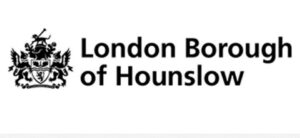Lancashire County Council has voted to merge its chief executive and section 151 officer roles, sparking a row about accountability.
At a meeting on Monday, the authority’s Conservative cabinet voted in favour of the unusual move in the teeth of vocal criticism from opposition Labour councillors.
The vote came at the end of a meeting at which current chief executive Jo Turton made a plea to keep both roles separate.
She told the cabinet: “Now plainly I do have a personal interest in this matter, but the report is not about me but about the future shape of the county council.
“I would simply emphasise there are reasons why there are three statutory officer roles and that combining them significantly reduces the checks and balances within the governance structure of this council.”
She added that a survey had confirmed that no other county or similar-sized metropolitan authority has such a combined role.
Turton also said she objected to part of the proposal which would separate children and adult services. Overall, the cabinet argued that the overall restructuring proposals would save £244,000 a year.
‘Risk of concentrating power’
A position statement from the cabinet, included in a report to the cabinet, said: “Especially in the current financial situation it is felt that the chief executive officer should also be the council’s most senior finance officer and the statutory section 151 officer.
“This will enable him/her to advise the administration on the financial as well as the policy dimensions of all proposals and to ensure that the financial problems are at the heart of all decisions made at every level of the organisation.”
During the meeting, a number of opposition councillors lined up to speak against the proposal. Councillor David Whipp said: “It is quite clear that there is a huge risk of consolidating executive power in the hands of a single person.
“There is a reason why there are checks and balances, why there is a division of responsibility, and that is to ensure that proper consideration is given to initiatives that come forward.
“A chief executive may wish to be very bold and that has to be tempered by a small ‘c’ Conservative officer exercising that section 151 responsibility.”
In tense exchanges with council leader Geoff Driver, Labour group leader Azhar Ali said:
“The question needs to be asked why Kent, Gloucestershire, Surrey, Buckinghamshire, North Yorkshire, Leicestershire – all these big counties which are all conservative controlled – have decided not to undertake that role.
“The answer simply is because it is not viable, not good governance.”
Speaking to Room151, Pete Moore, president of the Society of County Treasurers, of which Lancashire is a member council, sounded an unequivocal warning: “The chief executive (as head of paid service), the section 151 Officer and the monitoring officer all play independent, statutory roles in the proper and effective governance of a council. They provide checks, challenges and balance in that governance. Any combination of those independent roles has the potential to dilute that and weaken overall governance.”
Worries over interim costs
Councillor Ali also claimed that the cost of employing an interim to perform the role of chief executive and section 151 officer – which he said could reach up to £2,000 a day – would wipe out any savings in the first year.
He also questioned whether the council would be able to find anyone capable of taking on the new role.
He said: “There is a small pool of people qualified at this level to undertake this work and that small pool of people is already in employment.
“There is a danger that the way this is being done – and the damage to this authority’s reputation that has already been done by this cabinet and leader – that the number of applicants might be very small.
“Therefore, there’s a risk of no appointments and again you’ll have to resort in part to either asking officers of this council to step up out of those roles which they might not want or resorting to interims. Again there is a cost.”
Responding to the criticism, Driver said: “We are in serious financial difficulties and we need somebody at the top with financial expertise who can advise the county council on both policy and financial matters at the same time.
“If it was felt inappropriate to combine the two roles the law would stop it happening and it doesn’t.”
Practice ‘died out’ in noughties
Speaking to Room151, Rob Whiteman, chief executive of the Chartered Institute of Public Finance and Accountancy, confirmed there is nothing in the rules that prevents the move.
He said: “If what members want from their chief executive is an organisational head of an organisation with strong management and planning and a focus on making the organisation more efficient it can make sense for the roles to be combined.
“If, on the other hand, they are looking for the chief executive to have a focus on regeneration deals and putting together development partnerships, then you are at risk of creating a conflict of interest.”
Whiteman served at London Borough of Barking and Dagenham in a dual chief executive and section 151 role in the early noughties.
At that time, it was not unusual for chief executives to also hold section 151 responsibilities, with Bob Coomber at Southwark, Tony Redmond at Harrow and Richard Harbord at Richmond all performing both roles.
However, the practice has virtually died out since the introduction of the cabinet system into local government in 2000. Last year, Lancashire warned that it faced the prospect of being unable to carry out its statutory duties due to a major structural deficit.
A report commissioned by the council from accountancy firm PwC found that even if the council is successful in meeting all of its cost reduction targets, it will have a cumulative deficit of £398m by 2021.











